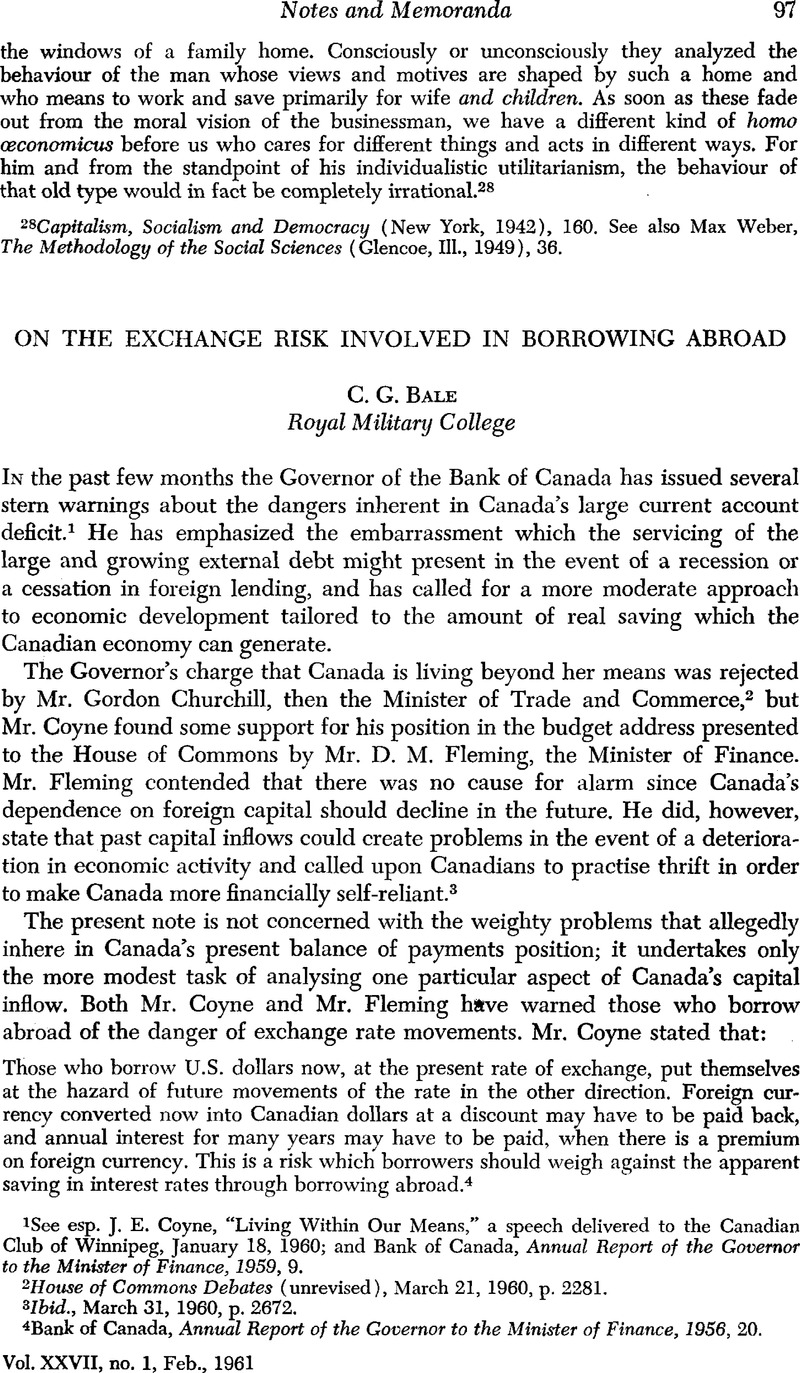No CrossRef data available.
Published online by Cambridge University Press: 07 November 2014

1 See esp. Coyne, J. E., “Living Within Our Means,” a speech delivered to the Canadian Club of Winnipeg, 01 18, 1960 Google Scholar; and Bank of Canada, Annual Report of the Governor to the Minister of Finance, 1959, 9.Google Scholar
2 House of Commons Debates (unrevised), 03 21, 1960, p. 2281.Google Scholar
3 Ibid., March 31, 1960, p. 2672.
4 Bank of Canada, Annual Report of the Governor to the Minister of Finance, 1956, 20.Google Scholar
5 H. of C. Debates (unrevised), 03 31, 1960, p. 2673.Google Scholar
6 We assume that the Canadian dollar is expected to depreciate, i.e. that the expected exchange rate is higher than the current spot rate.
7 The calculations have been made using the interest tables appearing in Simpson, T. M., Perenian, Z. M., and Crenshaw, B. H., Mathematics of Finance (New York, 1936).Google Scholar
8 The United States dollar appreciated by more than 20 per cent with respect to the Canadian dollar in 1931 following the abandonment of the gold standard by the United Kingdom. Again, in April, 1933, the Canadian dollar stood at a substantial discount with respect to the United States dollar. This period must, however, be regarded as extremely abnormal. If a bond were to mature during such a period, there would be the possibility of refunding it in the United States and avoiding the exchange loss.